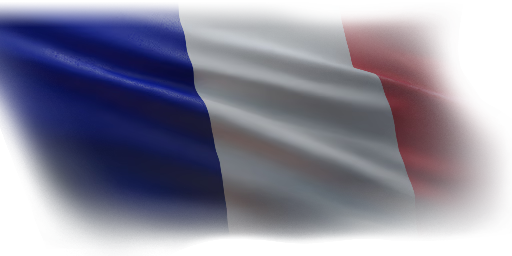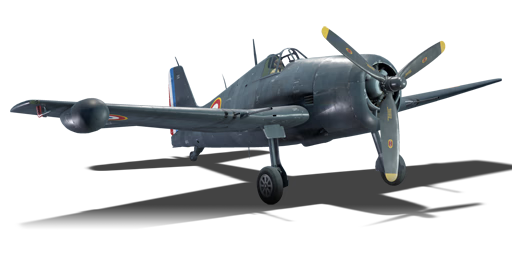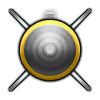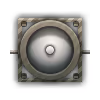



The F6F-5N (France) was acquired by France in the years following WWII. During the 1950s, France was still rebuilding its nation and its armed forces, and the easiest way to do so while domestic projects were developed was acquiring military surplus left after WWII. The F6F-5N was one of this cases, being a night fighter modified by Britain using the Hellcat as a basis. The aircraft was very similar to the original F6F-5 but this time, it included an AN/APS-6 search radar for interception at night and other inconvenient weather conditions. The French Navy bought 124 F6F-5s and 15 F6F-5Ns between 1950-1953.
It was introduced in Update 1.73 "Vive la France". The French F6F-5N (N stands for Night fighter variant) is the French variant of the Grumman F6F-5N Hellcat. This F6F is distinctly capable thanks to the combination of cannons, heavy machine guns, and the addition of a search radar while keeping the ability to provide ground and sea support with bombs and a single torpedo. It is an efficient jack-of-all-trades, and can defend itself in dogfight too, though doing so with ordnance attached is not recommended. It does not have the most agile airframe or the strongest engine, but it is still very capable in air battles, since it can both destroy bases and dogfight other aircraft. For these situations, the F6F must have the speed advantage or a higher altitude, so make sure to climb to a desired altitude at the start of the match.
flaps
flaps
flaps
brake
| Belt | Belt filling | Armor penetration (mm) at a distance: | |||||
|---|---|---|---|---|---|---|---|
| 10 m | 100 m | 500 m | 1000 m | 1500 m | 2000 m | ||
| HEF-I/AP-T | 39 | 36 | 25 | 16 | 10 | 6 | |
| AP-T/AP-T/HEF-I/HEF-I | 39 | 36 | 25 | 16 | 10 | 6 | |
| HEF-I/HEF-I/HEF-I/AP-T | 39 | 36 | 25 | 16 | 10 | 6 | |
| AP-T/AP-T/AP-T/HEF-I | 39 | 36 | 25 | 16 | 10 | 6 | |
| HEF-I | 5 | 4 | 3 | 3 | 3 | 3 | |
| Belt | Belt filling | Armor penetration (mm) at a distance: | |||||
|---|---|---|---|---|---|---|---|
| 10 m | 100 m | 500 m | 1000 m | 1500 m | 2000 m | ||
| T/Ball/Ball/I/AP-I | 28 | 26 | 18 | 11 | 7 | 4 | |
| AP-I/AP-I/AP-I/T/I | 28 | 26 | 18 | 11 | 7 | 4 | |
| T/AP/AP/AP/AP-I/I | 30 | 27 | 20 | 13 | 9 | 6 | |
| T/T/T/T/T/AP-I | 28 | 26 | 18 | 11 | 7 | 4 | |
| AP/AP-I/AP-I/I/I | 30 | 27 | 20 | 13 | 9 | 6 | |
| Name | Weight | Slot | ||||||||
|---|---|---|---|---|---|---|---|---|---|---|
| 62.8 kg |  |  |  |  |  |  | ||||
| 534.2 kg |  |  | ||||||||
| 242.6 kg |  |  | ||||||||
| 500.8 kg |  |  | ||||||||
| 964.8 kg |  | |||||||||












Flight performance | |
|---|---|
Weaponry | ||
|---|---|---|